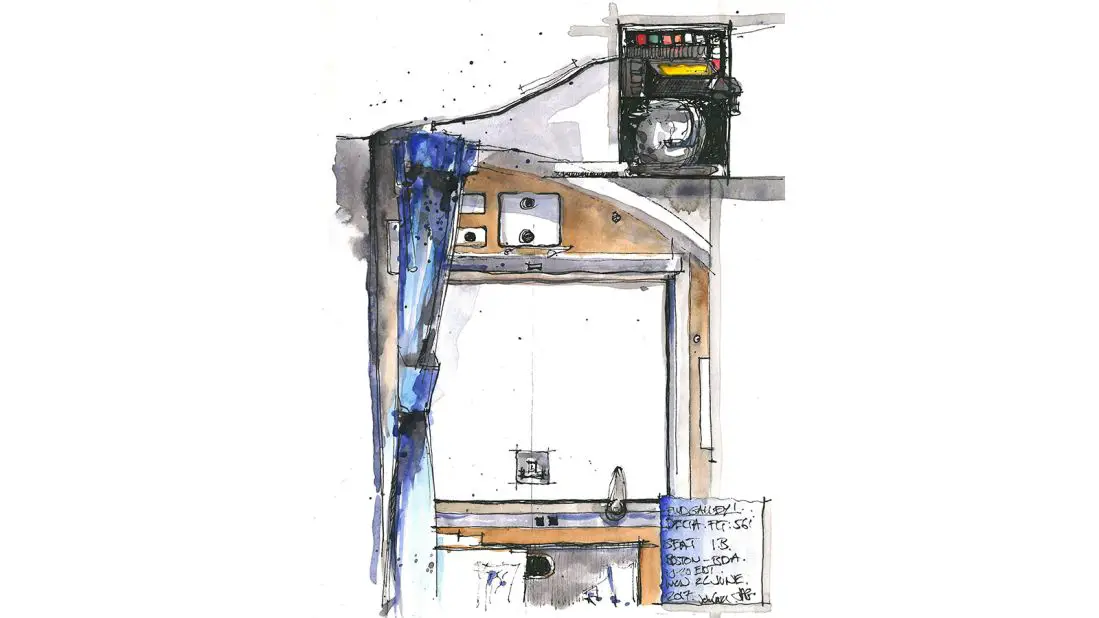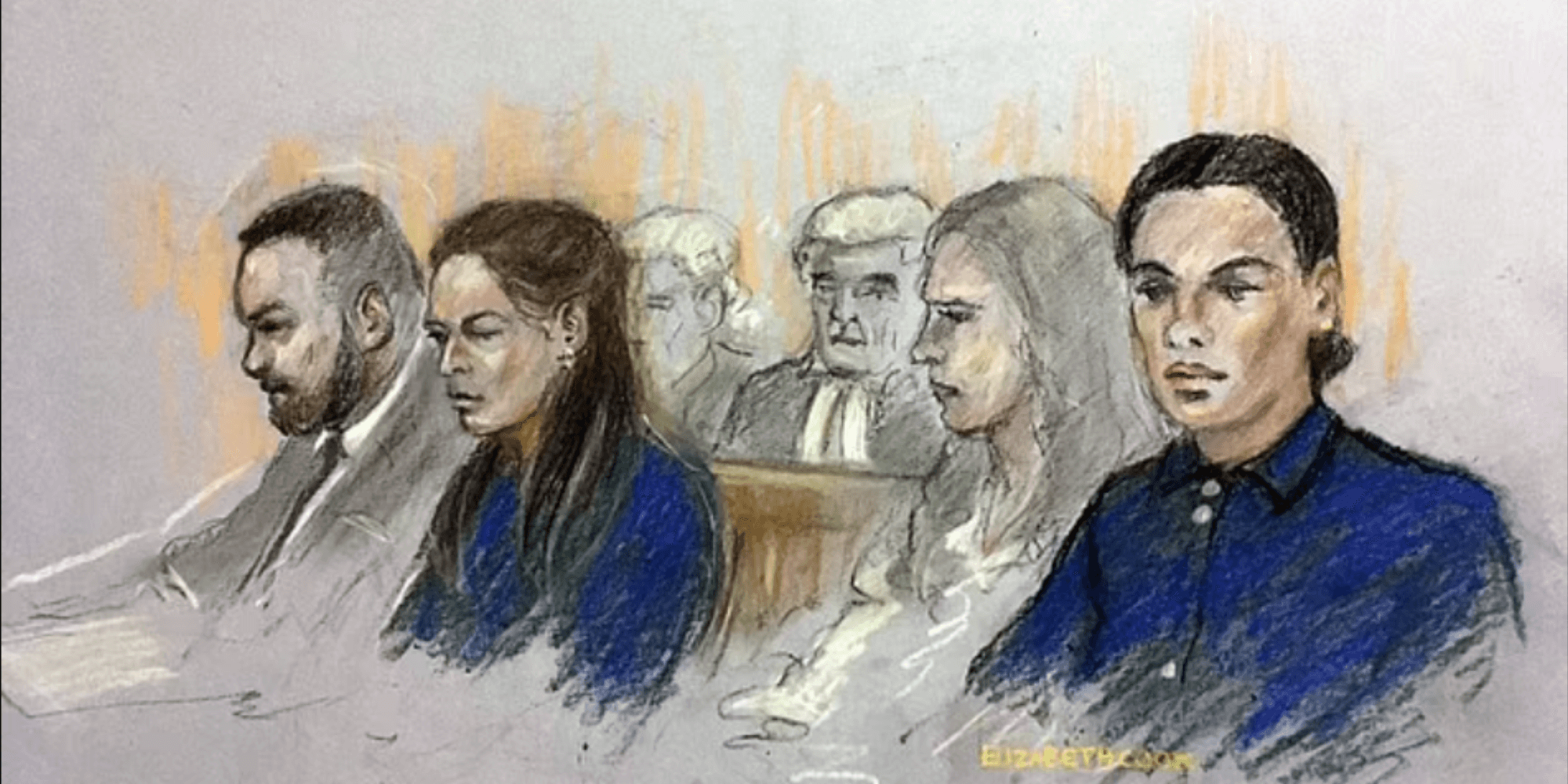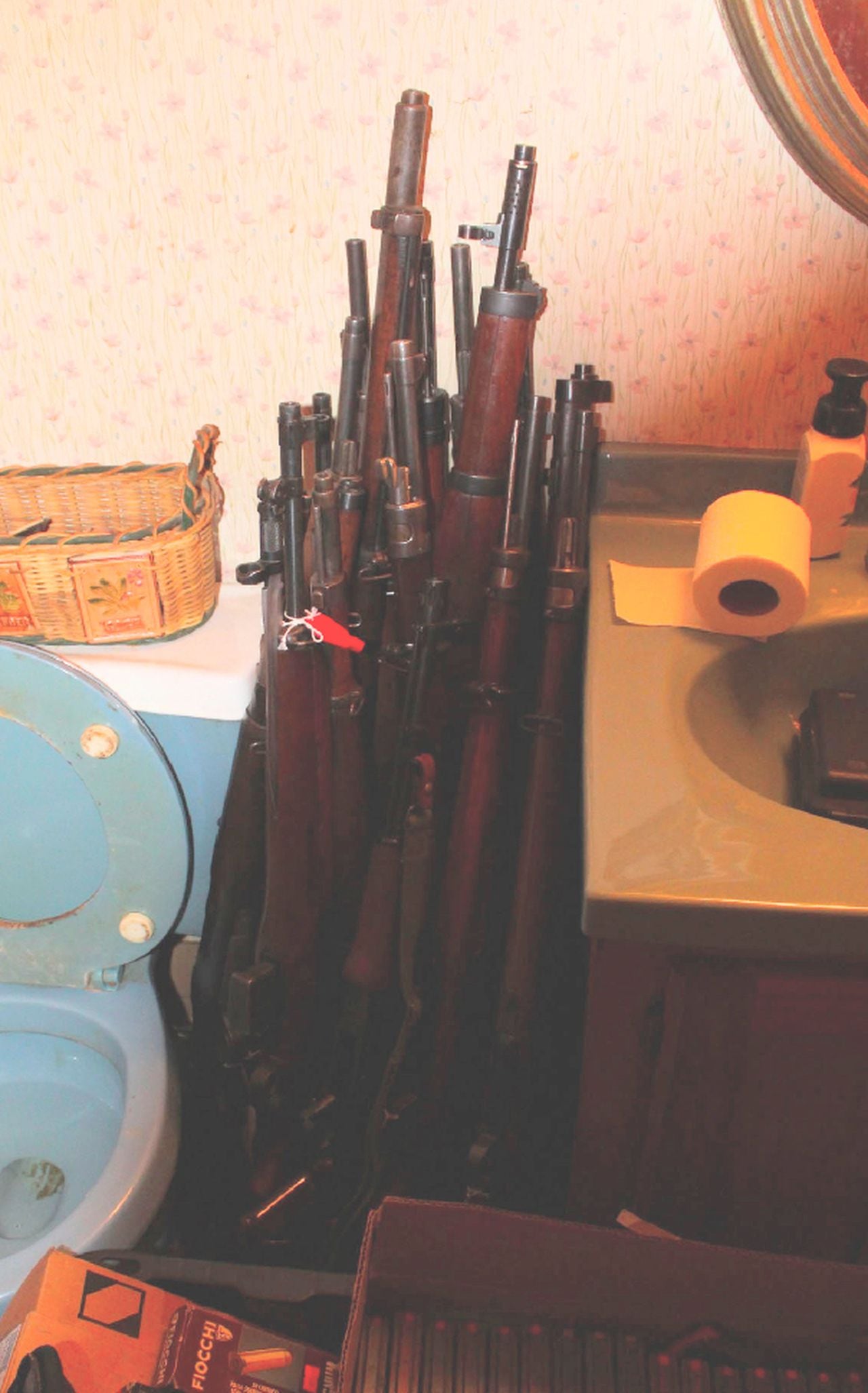In ice hockey, if there is a draw, the game goes into overtime for a sudden-death shootout. Ice hockey is a fast-paced and exhilarating sport that captivates audiences with its intense action and dynamic gameplay.
When two teams are evenly matched and the game ends in a draw, the excitement level reaches a peak as they head into overtime. This additional period of play is crucial as it determines the ultimate winner through a sudden-death shootout.
Players showcase their skills and nerves of steel in this high-pressure situation, vying to score the winning goal for their team. The suspense and drama of a shootout add an extra layer of thrill to an already exhilarating game, keeping fans on the edge of their seats until the final buzzer sounds.

Credit: www.cnn.com
Table of Contents
- 1 Understanding Ice Hockey
- 2 Exploring Different Outcomes
- 3 The Concept Of A Draw In Ice Hockey
- 4 How A Draw Impacts The Standings
- 5 Regular Season Vs. Playoffs
- 6 Overtime And Shootouts
- 7 Controversy And Rule Changes
- 8 Alternative Solutions
- 9 Player Reactions And Strategies
- 10 Fan Perspective And Excitement
- 11 Comparing Draws In Other Sports
- 12 Frequently Asked Questions On What Happens If There Is A Draw In Ice Hockey
- 12.1 What Happens If An Ice Hockey Game Ends In A Tie?
- 12.2 Can A Tie Occur In Professional Ice Hockey Games?
- 12.3 How Long Is The Overtime Period In Ice Hockey?
- 12.4 Is There A Shootout In Ice Hockey If The Game Is Tied?
- 12.5 Do Ties Have Different Implications In Playoff Games?
- 12.6 Can A Tie Impact A Team’s Standing In The League?
- 12.7 How Is A Tiebreaker Determined In Ice Hockey?
- 13 Conclusion
Understanding Ice Hockey
Basic Rules Of The Game
Ice hockey is played with two teams of six skaters each, trying to score goals by shooting a puck into the opponent’s net.
Importance Of Goals
Scoring goals is essential in ice hockey as it determines the winner of the game, providing excitement and satisfaction to the players and fans.
In case of a tie between the two teams at the end of regular play time, the game proceeds into overtime to break the tie.
- Overtime in ice hockey consists of a sudden-death period where the first team to score wins the game.
- If neither team scores during overtime, a shootout follows, where each team takes turns in trying to score against the opposing goalie.
The shootout continues with alternating shots until one team scores and the other does not, deciding the winner of the game.
Understanding Ice Hockey: The game continues until one team breaks the tie in overtime or shootout.

Credit: theathletic.com
Exploring Different Outcomes
In ice hockey, if there is a draw, the game goes into overtime, where the teams play an additional period to determine the winner. Overtime can either be sudden death, with the first team to score winning the game, or a shootout, where each team takes turns shooting at the opposing goalie.
Victory For A Team
In ice hockey, if the game ends in a tie at the end of the regulation time, the teams will play an overtime period or a shootout to determine the winner. During overtime, the first team to score wins the game. If neither team scores during overtime, a shootout will take place.
Tie Or Draw
If neither team scores in the shootout, the game officially ends in a tie, and both teams earn one point in the standings. However, in certain ice hockey leagues, a tie may still occur after the shootout, which results in each team earning one point.
The Concept Of A Draw In Ice Hockey
Ice hockey is an intense and fast-paced sport that captivates fans with its thrilling action and competitive spirit. Like any sport, ice hockey can sometimes end in a draw, leaving both teams without a clear winner. The concept of a draw in ice hockey may be unfamiliar to some, so let’s dive in and explore in more detail what exactly happens when the final buzzer sounds and the scoreboard displays a tie game.
Definition Of A Draw
A draw in ice hockey occurs when, after the regulation time (usually three periods), both teams have scored an equal number of goals. Unlike some other sports, such as soccer or basketball, where extra time or overtime is commonly played to determine a winner, ice hockey handles this situation differently.
In the event of a draw, the game may proceed to overtime or a shootout to determine one team as the ultimate victor. However, the specifics of how draws are resolved can vary depending on the level of play and the league’s rules.
In most professional ice hockey leagues, including the National Hockey League (NHL), regular-season games cannot end in a draw. Overtime is introduced to break the tie, adding an extra period where both teams skate with fewer players (typically three skaters per side) in what is commonly referred to as “sudden death.” This means that the first team to score a goal during this overtime period wins the game.
If neither team manages to score during the overtime period, the game proceeds to a shootout. The shootout is a thrilling sequence where three players from each team take turns attempting penalty shots against the opposing goaltender. The team that scores the most goals in the shootout is declared the winner, regardless of the final score after overtime.
Exceptions And Variations
While the overtime and shootout format is widely used, some leagues may have different rules for resolving draws. For example, in international tournaments, a 10-minute sudden death overtime period is added, followed by a shootout if necessary. Additionally, some leagues may award teams with a point for a draw in the regular time and allocate additional points to the winner of the overtime or shootout.
It’s important for fans and players alike to understand that the concept of a draw in ice hockey is not a common occurrence. The fast-paced nature of the game, combined with the skill and determination of the players, often leads to a decisive outcome. However, when a draw does happen, it adds an extra layer of excitement as teams battle it out in overtime or a shootout to claim victory.
How A Draw Impacts The Standings
When an ice hockey game ends in a draw, it can have a significant impact on the standings, affecting the points distribution and the rankings of the teams involved. Let’s take a closer look at the implications of a draw in ice hockey and how it influences the standings.
Points System Explanation
In ice hockey, the points system is designed to reward teams for their performance in each game. A win typically earns a team two points, while a draw results in both teams receiving one point each. If a game goes into overtime and a team wins, they are awarded an additional point for a total of three points, while the losing team still receives one point. This system encourages teams to strive for a win in regulation time, as it offers the maximum points.
What Happens To The Teams’ Rankings
- When a draw occurs, the teams involved each receive one point, which impacts their positions in the standings.
- Teams that secure a greater number of wins in regulation time are often ranked higher, as the two points earned for a win hold more value than the single point awarded for a draw.
- The total points accumulated by each team, including those from wins, draws, and overtime victories, contribute to their overall rankings within the league.
- In the case of tiebreakers, factors such as goal differentials or head-to-head performance may come into play to determine the standings of teams with the same point totals.
Regular Season Vs. Playoffs
Regular Season vs. PlayoffsWhen it comes to ice hockey, understanding how a tie is managed is crucial, especially in the context of regular season and playoffs. In the regular season, tied games are often resolved differently than in the playoffs.
Dealing With Draws In The Regular Season
During the regular season games, if two teams are tied at the end of the third period, the game will proceed to an overtime period. This period consists of five minutes of sudden death play, where the first team to score wins the game. If the game remains tied after the overtime period, the game proceeds to a shootout. Each team selects three players to take alternate shots against the opposing goalkeeper. If the score remains tied after the initial three rounds, the shootout continues round by round until a winner is determined.
Resolving A Tie During The Playoffs
Playoff games in ice hockey have a different approach to resolving draws. In the playoffs, tied games proceed directly to sudden death overtime, with 20-minute periods until a team scores a goal. This continues until one team emerges victorious. There are no shootouts in playoff games, emphasizing the importance of extended play to determine a clear winner. This format ensures that playoff games have a conclusive outcome, minimizing the possibility of a draw during this crucial stage of the season.

Credit: www.masslive.com
Overtime And Shootouts
When it comes to ice hockey, a draw is a rare occurrence but it can happen. In such cases, the game cannot end in a tie, and overtime and shootouts are used to determine the winner. Let’s take a closer look at the rules for overtime and shootouts.
Overtime Rules
Overtime is an additional period played after regular game time ends to determine a winner. In the National Hockey League (NHL), the overtime period consists of 5 minutes of 3-on-3 hockey, providing more open ice and exciting scoring opportunities. The team that scores a goal during this period is declared the winner.
If neither team manages to score during the 5-minute overtime period, the game proceeds to a shootout. However, during the regular season, teams are awarded one point for reaching overtime, ensuring that the game still contributes towards their overall standings.
Shootout Rules
Shootouts are used as a tiebreaker if the game remains deadlocked after the 5-minute overtime period. In a shootout, three players from each team take turns to shoot on the opposing goalie. The shootout is conducted in a best-of-three format, meaning the team that scores the most goals out of three attempts is declared the winner.
If the shootout remains tied after three rounds, it transitions into a sudden-death format. In sudden death, each team takes one shot per round until there is a winner. Whichever team scores and prevents the opposition from doing so in the same round, emerges as the victorious team.
It’s important to note that shootout goals do not count towards a player’s individual or team statistics. Nevertheless, the shootout is an exhilarating way to conclude a game with a clear winner, avoiding the possibility of a tie.
Controversy And Rule Changes
In the history of ice hockey, draw situations have sparked intense debate and controversy among players, coaches, and fans.
Confusion often arose when games ended in a tie, leaving both teams unsatisfied with the lack of a definitive outcome.
These controversies led to significant changes in the rules of ice hockey to address the issue of draws.
- Introduction of overtime and shootout: To ensure a clear winner emerged from every game.
- Modification of tie-breaking criteria: To prioritize goal differentials or include overtime results.
Overall, the controversies surrounding draws in ice hockey have catalyzed crucial rule adaptations to enhance the game’s competitive nature.
Alternative Solutions
In ice hockey, draws can lead to unsatisfactory outcomes. Let’s explore some alternative solutions to address this issue.
Eliminating Draws Altogether
One solution is to eliminate draws altogether, ensuring a decisive outcome for every game.
Modifying The Overtime Format
Another approach is to modify the overtime format, ensuring that a clear winner emerges from every match.
Player Reactions And Strategies
When it comes to ice hockey, the possibility of a draw adds an extra layer of excitement to the game. Player reactions and strategies greatly vary when faced with the potential outcome of a tie. Whether it’s adjusting to the possibility of a draw, implementing tactics during overtime and shootouts, or aiming for a decisive win, players leave no stone unturned in their quest to secure victory.
Adjusting To The Possibility Of A Draw
When the scoreboard shows a tied game during regular time, players must mentally adjust their approach. It’s crucial to remain focused and maintain a competitive edge despite the uncertainty of the outcome. Teams kick into high gear, relentlessly pushing for the winning goal while also ensuring they do not become too vulnerable in their attack. Adjusting in such situations requires a delicate balance between maintaining offensive momentum and exercising caution in defense, preventing counterattacks that could tip the scales in favor of the opposition.
Tactics During Overtime And Shootouts
During overtime, teams shift their strategies in order to score that elusive winning goal. Coaches devise tactics that prioritize offensive prowess while carefully keeping defensive stability intact. Players employ quick passing, accelerated puck movement, and intense pressure on the opponent’s defense to create scoring opportunities. Alternatively, teams may focus on containing the opposing team’s attacks by adopting a more conservative approach, aiming to frustrate their opponents while remaining defensively resilient.
If overtime fails to yield a victor, a shootout determines the game’s outcome. Shootouts require players to showcase their individual skill and composure under pressure. Coaches often select the most proficient players in terms of scoring, speed, and precision to step up for the shootout. From deking goaltenders to utilizing deceptive shot techniques, players display their creativity and aim to outfox the opposition’s netminder. The pressure on the shooters is immense, as the outcome of the game often rests solely on their shoulders.
Ensuring A Decisive Win
While a draw is a possible outcome, teams strive for a decisive victory whenever possible. This mindset fuels players’ dedication and relentless pursuit of success. To ensure a win, players double their efforts during overtime and shootouts, leaving no strategy unexplored. Their determination to seize the opportunity and deny their opponents any chance of advancement drives their actions. Each player knows their role and the importance of executing their duties flawlessly, all with the common goal of emerging victorious.
In conclusion, player reactions and strategies in the face of a potential draw in ice hockey are intense, calculated, and driven by a passionate desire to secure victory. Adapting to the possibility of a draw, implementing tactical adjustments during overtime and shootouts, and aiming for a decisive win are all crucial components of the game that keep fans on the edge of their seats.
Fan Perspective And Excitement
In ice hockey, a draw can evoke a range of emotions from fans, adding an air of excitement to the game. Let’s explore the fan perspective and the thrilling moments tied games can bring.
Fan Sentiments Towards Draws
Fans often have mixed feelings when a hockey game ends in a draw. Some may feel a sense of disappointment, wishing for a clear winner, while others appreciate the intense competition that led to the tie. The unpredictability of a drawn game can leave fans on the edge of their seats, generating anticipation for the next matchup.
Thrilling Moments In Tied Games
Tied games in ice hockey can create exhilarating moments that keep fans engaged until the final horn. Overtime periods and shootouts add an extra layer of excitement, as every play has the potential to break the stalemate and declare a victor. The tension and energy during these decisive moments make draws a captivating spectacle for hockey enthusiasts.
Comparing Draws In Other Sports
When it comes to ice hockey, the occurrence of a draw is not as common as in other sports. While many sports have clear regulations on how to handle a draw situation, ice hockey takes a unique approach. Let’s take a look at how other sports handle draws and explore the key differences with ice hockey.
How Other Sports Handle Draws
- In soccer (football), a draw at the end of regular time results in each team earning one point in the league standings.
- Tennis uses tiebreaker rules to determine a winner in case of a draw in sets, where a player must win by a margin of two games.
- Cricket allows for a draw, which occurs when the allocated time for the match elapses without a result being reached.
- Basketball also implements overtime periods to break a tie, allowing for a clear winner.
Key Differences With Ice Hockey
- In ice hockey, if regular time ends in a draw, teams proceed to either overtime or a shootout to determine a winner, ensuring there is no tie in the final result.
- Unlike sports where a draw results in a shared point, ice hockey emphasizes the significance of securing a winner for each match, promoting a clear victor.
- Ice hockey’s use of sudden-death overtime and shootout scenarios distinguishes it from other sports, providing an exciting conclusion to games that end in a tie.
Frequently Asked Questions On What Happens If There Is A Draw In Ice Hockey
What Happens If An Ice Hockey Game Ends In A Tie?
In the case of a tie, the game may go into overtime and then a shootout to determine the winner.
Can A Tie Occur In Professional Ice Hockey Games?
Yes, ties can occur in regular season NHL games if neither team scores in overtime.
How Long Is The Overtime Period In Ice Hockey?
In professional ice hockey, the overtime period lasts for five minutes of sudden-death play.
Is There A Shootout In Ice Hockey If The Game Is Tied?
If the game remains tied after the overtime period, a shootout is used to determine the winner.
Do Ties Have Different Implications In Playoff Games?
No, playoff games cannot end in a tie and will proceed with multiple overtime periods if necessary.
Can A Tie Impact A Team’s Standing In The League?
Yes, ties can affect a team’s position in the standings and their chance of making the playoffs.
How Is A Tiebreaker Determined In Ice Hockey?
In the case of ties in the standings, various tiebreakers such as regulation wins are used to determine rankings.
Conclusion
A draw in ice hockey leads to overtime and shootouts to determine a winner. The excitement builds as players showcase their skills and tactics to break the tie. This dynamic aspect of the game keeps fans on the edge of their seats, highlighting the unpredictable nature of ice hockey.
So, next time you watch a match, be prepared for the thrill of a possible draw and the epic climax that follows.
